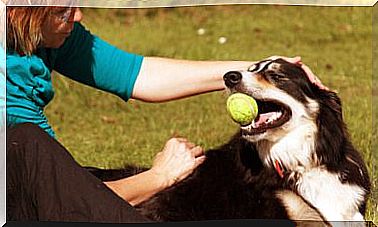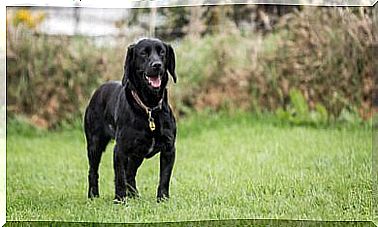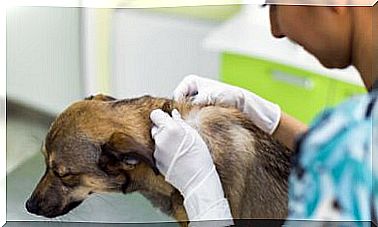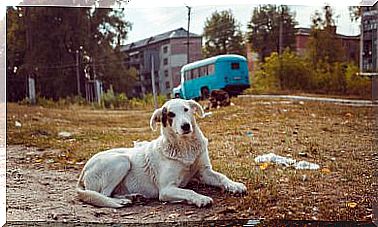How To Detect Blindness Early In Dogs?
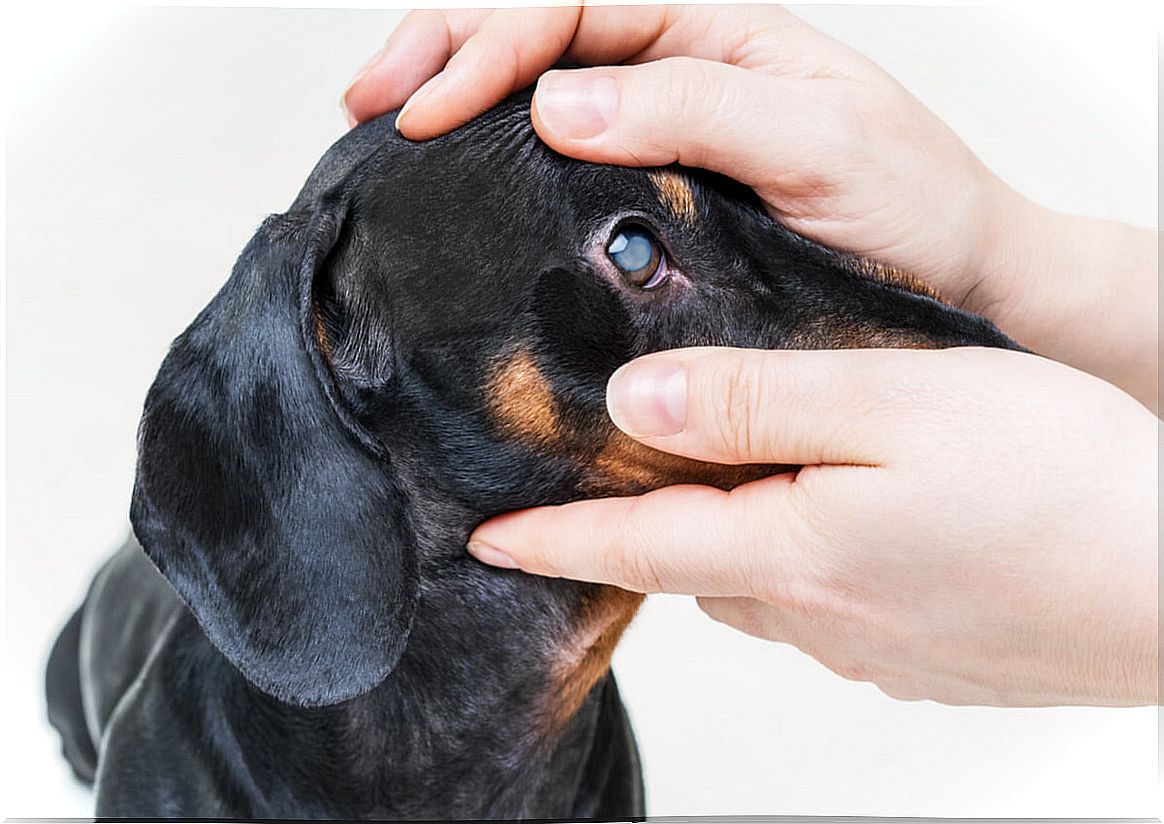
Loss of vision or blindness in dogs is a relatively common occurrence. In both dogs and cats, it can be associated with genetic problems and appear very early in the animal’s life, although it most often occurs when it reaches senescence.
It is rare to find a puppy blind from birth, since it is normal for this condition to be acquired in the adult or senior stage due to diseases or due to advanced age.
Blindness in dogs can have an intraocular origin or appear due to a central nervous system condition. Find out here how to detect blindness in dogs early.
Causes of blindness in dogs
Below we will show you the most common causes of blindness in dogs, although first it should be noted that certain breeds may have a greater predisposition to suffer from ophthalmological pathologies.
For example, breeds such as the dachshund, miniature schnauzer and the Spanish Breton are prone to retinal degeneration, a condition that, if left untreated, can leave the animal completely blind.
During a consultation, the vet can confirm some of these problems and advise you to see a specialist in veterinary ophthalmology if necessary.
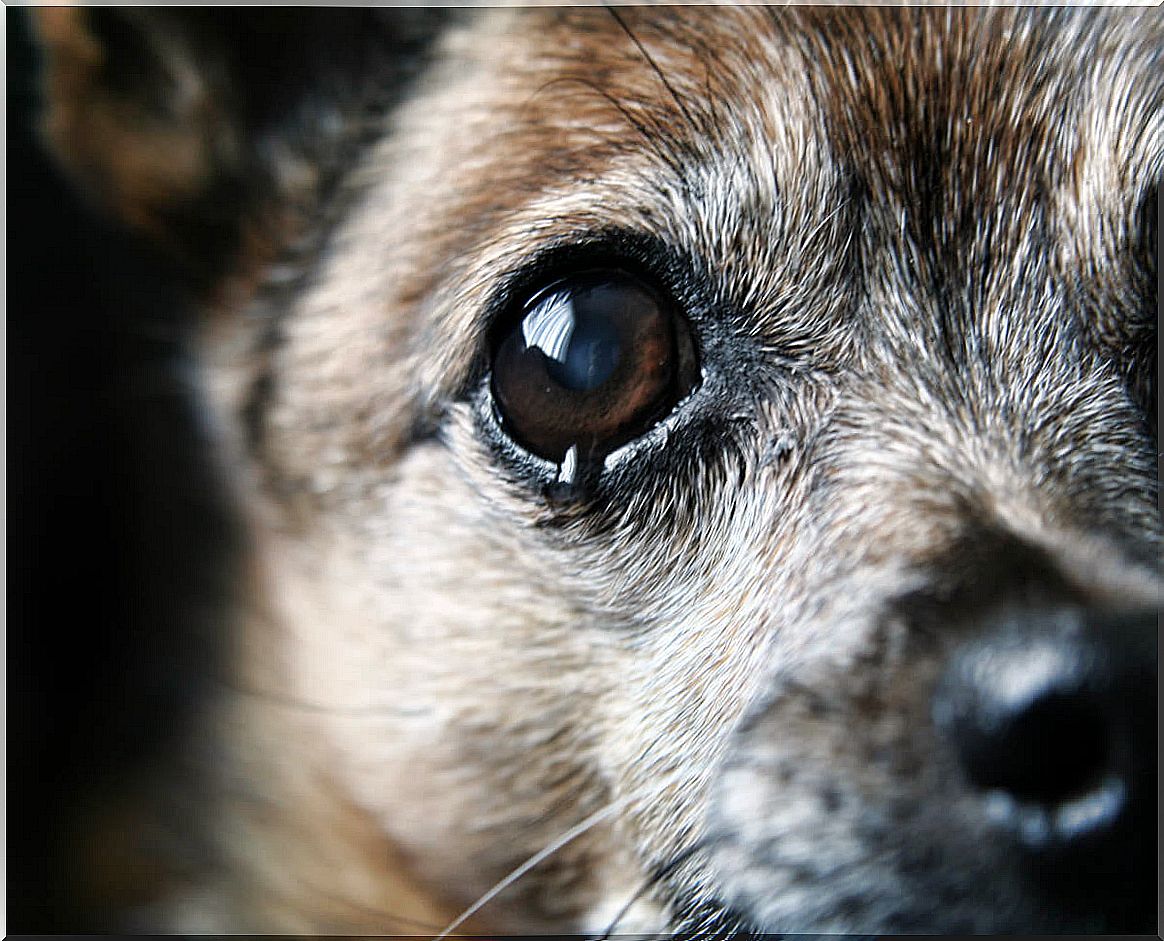
waterfalls
Cataracts are caused by a clouding of the lens, a lens behind the iris with which the eye is able to focus.
This condition can appear in animals of not very advanced age, unlike cataracts in humans. It usually occurs due to bumps, injuries, chronic inflammation of the eye, diabetes or some inherited disorder.
It can affect one or both eyes and the only treatment is surgical, as it happens in people. In this intervention, the lens is replaced by an intraocular lens.
The nuclear sclerosis is a loss of transparency of the lens. This does occur with advancing age, as it usually appears after six to eight years of life. The lens has an iridescent or milky appearance, different from cataracts. It has no treatment, but it does not affect the vision of the animal.
To differentiate between nuclear sclerosis and cataracts, it is necessary to go to the veterinarian, in order to perform a good ophthalmoscopic examination on the animal.
Progressive retinal atrophy
It is a degeneration of the cells of the retina that leads to irreversible blindness. A fundus examination is necessary to establish the diagnosis. It should be noted that loss of vision in low-light environments is one of the suspicions of this condition.
Glaucoma
It is the increase in intraocular pressure due to excess fluid inside the eyeball. If this pressure is maintained for a long time or is very high, the optic nerve can be damaged and cause blindness. There are treatments to correct glaucoma and surgery to lower intraocular pressure to preserve vision.
How to detect our pet’s blindness early?
The loss of vision can be accompanied by some type of obvious eye condition that is a sufficient sign to alert us and go to the vet, however this is not always the case. A visually impaired animal may have some of the following signs:
- Changes in the color of the pet’s eyes. The eyes take on a bluish or reddish hue and can produce secretions.
- The animal walks confused.
- You have trouble finding your food and / or water containers.
- He becomes disoriented if the distribution of the furniture in the house is changed or when he is taken to some unknown place.
- Often bumps into objects and / or people.
- Shows atypical aggressive reactions.
Caring for a dog who is losing his sight
In some cases, the loss of vision is irreversible and the dog must be helped to function in the environment for the rest of its life. Still, blindness is never a justification for getting rid of the animal.
In addition, taking into account that dogs are guided mainly through their smell, losing vision does not seriously reduce their quality of life if things are made easier for them with the following tips:
- Avoid leaving furniture or other objects that are an obstacle for the dog.
- It blocks access to stairs, swimming pools, windows, terraces or other similar places through which the animal could fall.
- Put his feeder, toys or bed in the same place.
- Present objects to him through smell as environmental enrichment.
- Walk on a leash and do not allow other people or dogs to approach abruptly, as the animal could get scared. Let him get closer using his nose. Establish a routine when it comes to places for walks, as familiar smells will give you peace of mind.

As we have seen, the detection of blindness in dogs is relatively simple as long as the tutor pays attention to the behavior of his dog. Once this loss of sight is confirmed , a visit to the vet becomes essential.



